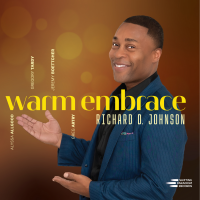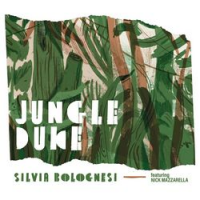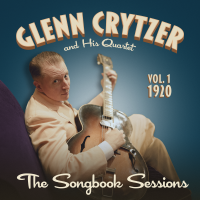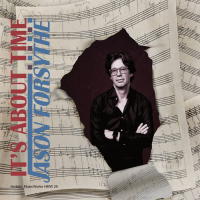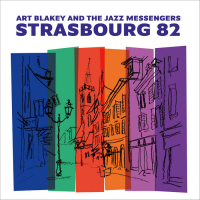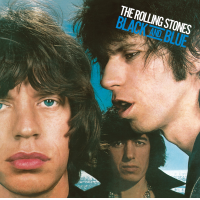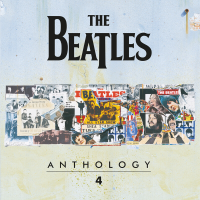Home » Jazz Articles » Extended Analysis » Pink Floyd: Pink Floyd: The Endless River
Pink Floyd: Pink Floyd: The Endless River
At the time, one of the ideas that the band members had with Division Bell was to make a double album where one part would feature regular songs and the other, ambient compositions (with a working title The Big Spliff), but that idea was put to a side. Based on 20 hours of unearthed meandering improvisations between guitarist David Gilmour, the late Richard Wright on keyboards and drummer Nick Mason, or the core of the band, later rerecorded and new material added which was eventually shaped into the four movements of Endless River. Actually, Endless River is a single continuous musical piece having many distinctive sections, where each either segues into or introduces the next section. The album as a whole is a progression consisting of many chapters.
The album was produced by old and new collaborators of both Pink Floyd and David Gilmour's solo projects like engineer Andy Jackson, Youth, Phil Manzanera along with David Gilmour. Guitarist extraordinaire of Roxy Music fame, Phil Manzanera, worked with Pink Floyd on the first post-Roger Waters record Momentary Lapse of Reason (EMI, 1987) where he co- wrote "One Slip" and he co-produced Gilmour's solo record On an Island (EMI, 2006). On the other hand, producer Youth is a member of the ambient house band The Orb which at the start of the '90s was called the rave generation's Pink Floyd, among other things, due to its kaleidoscopic music. It was Youth who produced the brilliant Orb record with David Gilmour Metallic Spheres (Columbia, 2010), but these two bands and institutions go back way back together in the past. Apart from the circulation of underground Orb remixes of Pink Floyd material (which ironically weren't done by the Orb), Orb sampled Gilmour's guitar for a track from its debut, The Orb's Adventures beyond the Ultraworld (Big Life, 1991). Also, Pink Floyd's bassist and participant in this project (and a son in law to Richard Wright) Guy Pratt, has worked previously with Orb. On the other hand, Andy Jackson, not only was the engineer for the last two Floyd records but he also worked on the remastering of the bonus material from the Immersion box sets.
Recorded during the sessions for Division Bell, this record feels like a distant sister to it. It also relates to the Richard Wright's solo record Broken China (EMI, 1996). Much like these records so is Endless River partially influenced by the ambient sound which in its many disguises was dominantly popular in the first half of the '90s on the British scene. Back then, it was championed by the likes of Orb, KLF, Aphex Twin or Mixmaster Morris, and that reflects on both records. And Pink Floyd's music has always had that cinematic feel to its music. Endless River is in a way, a loose homage to the very concept of soundtrack music. On the one hand, they cut loose from the expectations of doing a song based album and they have turned to the cosmic roamings they were known for in the pre-Dark Side of the Moon era.
But this record falls in a category of its own. It is simultaneously a series of explorations in sound, often fascinating and full of transcendent moments. These 18 vignettes offer soundscapes that are respectively evocative and most of the time, serene and warm. But regardless of the time distance of the sessions and the improvised basis for this record, the band could not escape from its past. While the overall sound evokes the '90s warm and cinematic ambiences, the band occasionally nods at the past through its evocative sounds. Pink Floyd has produced such a strong and immediately recognizable artistic blueprint that has become a source of inspiration and imitation ever since.
"Things left Unsaid" bears a little resemblance to "Shine on You Crazy Diamond" with its slow paced keyboards while the following "It's What We Do" also evokes "Welcome to the Machine." All throughout, the touch of Wright's keyboards not only paints beautiful pictures but also shows how his distinctive keyboards were crucial to the band's sound as much as Gilmour's guitars and Mason's pace on the drums. "It's What We Do" blossoms beautifully with Gilmour's chiming guitar bravuras at its most lyrical over the gentle keyboard touches. But not everything here is serene and slow paced. Gilmour rips his guitar with a series of dark solos over Mason's rollicking drums and that sense of uneasiness is carried over to "Skins." "Anisina" is a riveting piece of music much in the same manner as "Us and Them" is, with its slow waltz tempo. "Allons-y (1)" and "Allons-y (2)" are two up-tempo tracks driven by a tempo similar to "Run Like Hell."
"Autumn 68" is one of the standout tracks. It employs an archived recording of Richard Wright's organ playing at the Royal Albert Hall dated from 1968. The sound of his organ is so uniquely evocative and recognizable that it makes this piece of music sound like an aural hypnosis. It probably is a reference to Wright's track "Summer '68" from Atom Heart Mother (EMI, 1970).
"Talking Hawking" has a memorable piano hook augmented by a beautiful interplay of the lap steel and the guitar, and somewhere in the background, the voice of scientist Steven Hawking can be heard giving a lecture on the state of humanity. The ending song, "Louder than Words" was written by Gilmour's wife, Polly Samson and it perfectly sums up the dynamic, turbulent but highly creative career of this seminal band. The turbulent story of Pink Floyd consists of many chapters that only adds to the band's legendary status.
Endless River is a record that will cause many debates and will be compared to other past achievements from the band's oeuvre. But it is a very good record on its own merits and it provides a glimpse of might have happened if the band continued to work together in the '90s under the banner of Pink Floyd. Endless River is the band's swansong and with it, it ends on a high note.
Track Listing
Things Left Unsaid, It's What We Do, Ebb and Flow, Sum, Skins, Unsung, Anisina, The Lost Art of Conversation, On Noodle Street, Night Light, Allons-y (1), Autumn '68, Allons-y (2), Talkin' Hawkin, Calling, Eyes to Pearls, Surfacing, Louder than Words.
Personnel
Pink Floyd
band / ensemble / orchestraDavid Gilmour: guitars, vocals, keyboards, piano, EMS VCS 3, bass guitar (2,4,7), voice samples; Nick Mason : drums, percussions, voice samples; Richard Wright: Hammond organ, Farfisa organ, pipe organ, piano, Rhodes piano, keyboards, synthesiser, vibraphone, voice samples; Guy Pratt: bass guitar (9,14); Bob Ezrin: bass guitar (11,13,18), additional keyboards (1); Andy Jackson: bass guitar (5,16), effects (15); Jon Carin: synthesisers (9,11,13), percussion loop (11,13); Damon Iddins: additional keyboards (4,12); Anthony Moore: keyboards ("Calling"); Gilad Atzmon: tenor saxophone (7), clarinet (7); Chantal Leverton: viola (18); Victoria Lyon: violin (18); Helen Nash: cello (18); Honor Watson: violin (18); Durga McBroom: backing vocals (14,17,18); Louise Marshal: backing vocals (18); Sarah Brown: backing vocals (18); Stephen Hawking: voice sample (14).
Album information
Title: Pink Floyd: The Endless River | Year Released: 2014 | Record Label: Parlophone
Tags
About Pink Floyd
Instrument: Band / ensemble / orchestra
PREVIOUS / NEXT
Support All About Jazz
 All About Jazz has been a pillar of jazz since 1995, championing it as an art form and, more importantly, supporting the musicians who make it. Our enduring commitment has made "AAJ" one of the most culturally important websites of its kind, read by hundreds of thousands of fans, musicians and industry figures every month.
All About Jazz has been a pillar of jazz since 1995, championing it as an art form and, more importantly, supporting the musicians who make it. Our enduring commitment has made "AAJ" one of the most culturally important websites of its kind, read by hundreds of thousands of fans, musicians and industry figures every month.
















